Shoulder Care
General advice on exercise and regaining shoulder function.
Stiffness of the shoulder may occur after breast or armpit (axillary) surgery. It is quite common for patients to develop pain in both shoulders – on the affected side due to lack of ‘normal’ use of the arm and on the unaffected or opposite side due to over-use. So much emphasis is placed on the ‘breast’ recovery side that patients are often not warned about the possible problems that can develop with the shoulders. One of the most frustrating parts of shoulder pain is that it can interrupt sleep, at a time when sleep is the most needed for full recovery. It is therefore important you regain full use of your shoulder as soon as possible after your operation.
This can be done with a combination of exercise, massage and by using your arm normally for daily activities at home and at work.
Shoulder movement is improved by doing exercises. It reduces stiffness and also prevents your skin and muscles from becoming tight. The exercises shown on this page should be used as a guide. Other exercises may be recommended by your physiotherapist or doctor.
Always do exercises within comfort limits.
Stretching or pulling in your armpit with exercise is quite normal. If you are experiencing significant pain whilst doing these exercises, speak to your physiotherapist, breast care nurse or doctor. Increasing pain is always a concern and must be mentioned to your doctor.
Exercises to start the day after surgery.
These exercises are for ALL patients including those with a drain in place.
They are appropriate for the first 7-14 days after surgery, or until your first doctors’s appointment.
On the first day after surgery, it is good to get up and sit out of bed and go for a walk. Placing a pillow or a small rolled towel behind your lower back when sitting helps you keep an upright posture. You may place a small pillow on the side of your chest wall for comfort when you are sitting or sleeping but always remove this when you are walking. Remember to keep your back straight and your shoulders back when you sit or stand. Stand tall when you walk.
The aim of these exercises is to increase movement, but also to allow time for healing. Do not do the exercises more than recommended or above shoulder height as this may cause pain or oozing from the wound or drain site.
Complete each of the exercises below five times.
Repeat the exercise program four times a day.
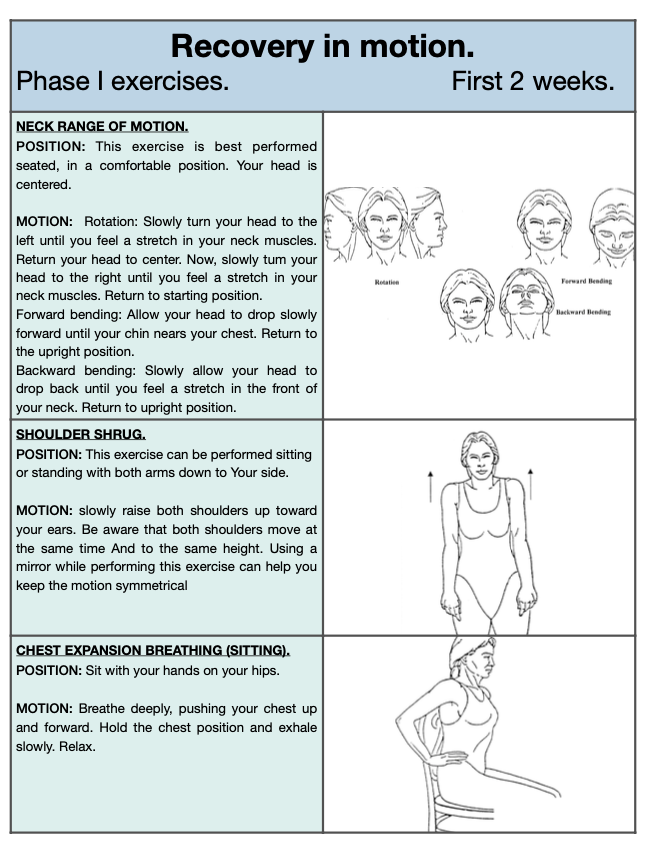
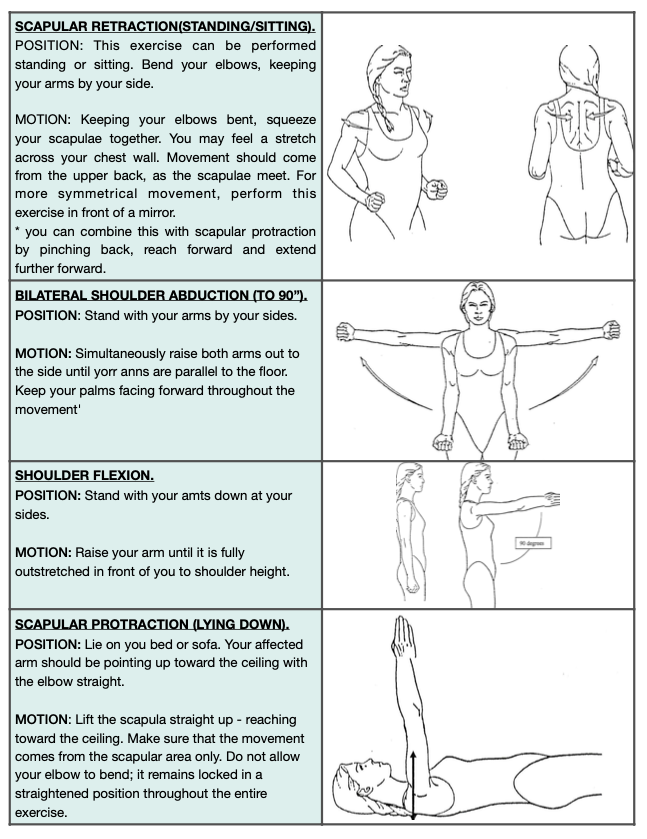
Exercises to start 2 weeks after surgery.
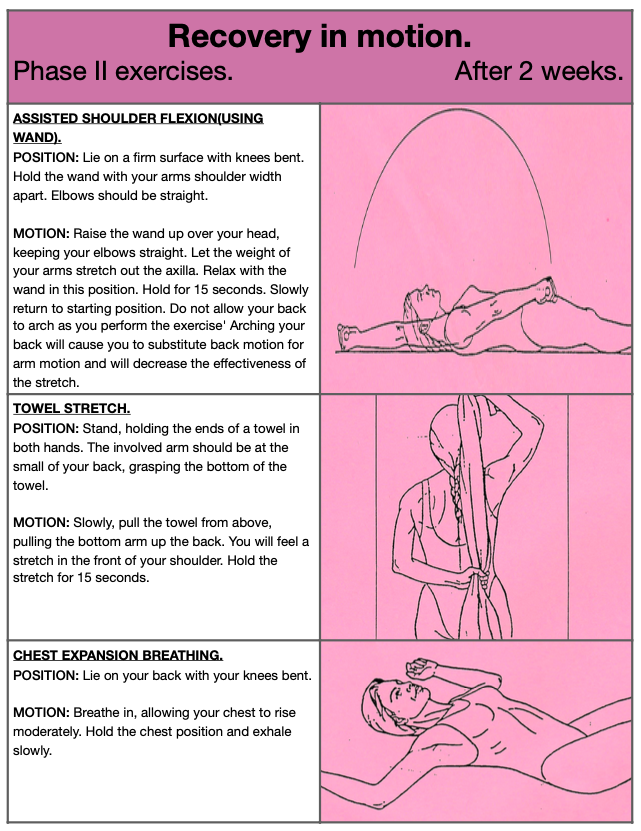
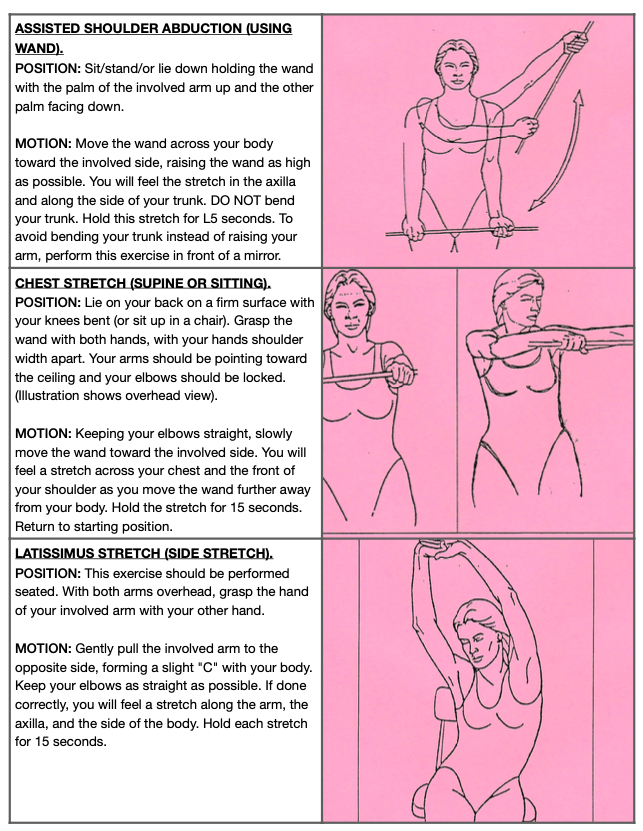
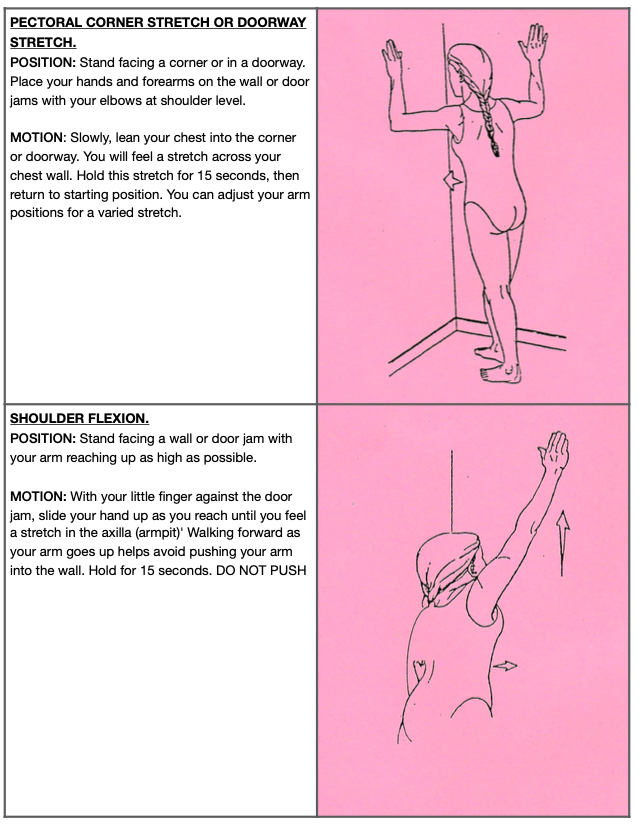
Massage
Massage helps to remove excess fluid and helps improve the mobility of the scar.
You can begin to massage the scar when the wound dressing is removed and healing has occurred, usually a minimum of two weeks after your surgery. Check with your physiotherapist, breast care nurse or doctor if you have had any type of breast reconstruction operation, or if you are not sure if the area has sufficiently healed. At first, the area may be painful to touch. The area should become less sensitive and tender as you continue with the massage. You can use cream or oil to make the area easier to massage. Both of these massage techniques can be carried out by yourself or a support person. If you have any concerns about the massage techniques below, consult with your physiotherapist, breast care nurse or doctor.
Massage of the scar
Using the flat of your fingers and with a constant, firm pressure, move your fingers in a circular motion across the scar. Commence the movement at the outer edge of the scar, moving towards the middle of your body. The scar may be sensitive at first, but will become lead tender. You can adjust the pressure of your massage as it becomes less sensitive. Concentrate on any tight bands or hard nodules of the scar tissue. Repeat this movement for 2 minutes, twice a day.
Massage of the arm
Using the flat of your hand and with a constant, firm pressure, massage from the elbow to the armpit and across the chest. Repeat this movement for up to 5 minutes, once a day. Do not massage towards the hand and fingers. This can be started 7 days after surgery or after any dressing or drains in the axilla have been removed.
Other information
If you have any concerns or are unsure about anything in the brochure, speak to your physiotherapist, breast care nurse or doctor.